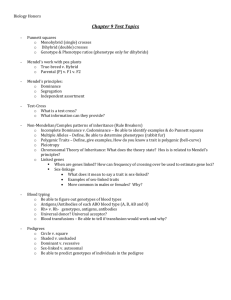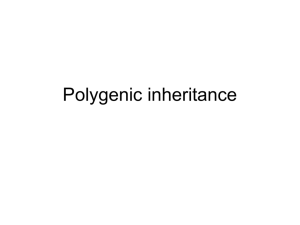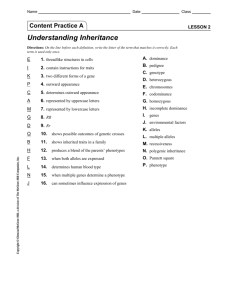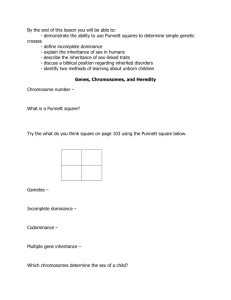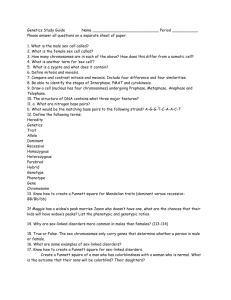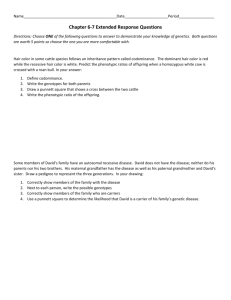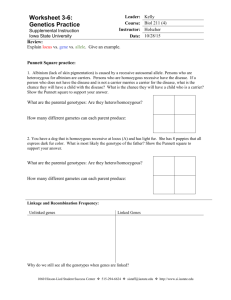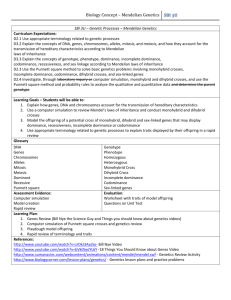Study Guide Chapter 10 & 12 Genetics Vocab: True
advertisement
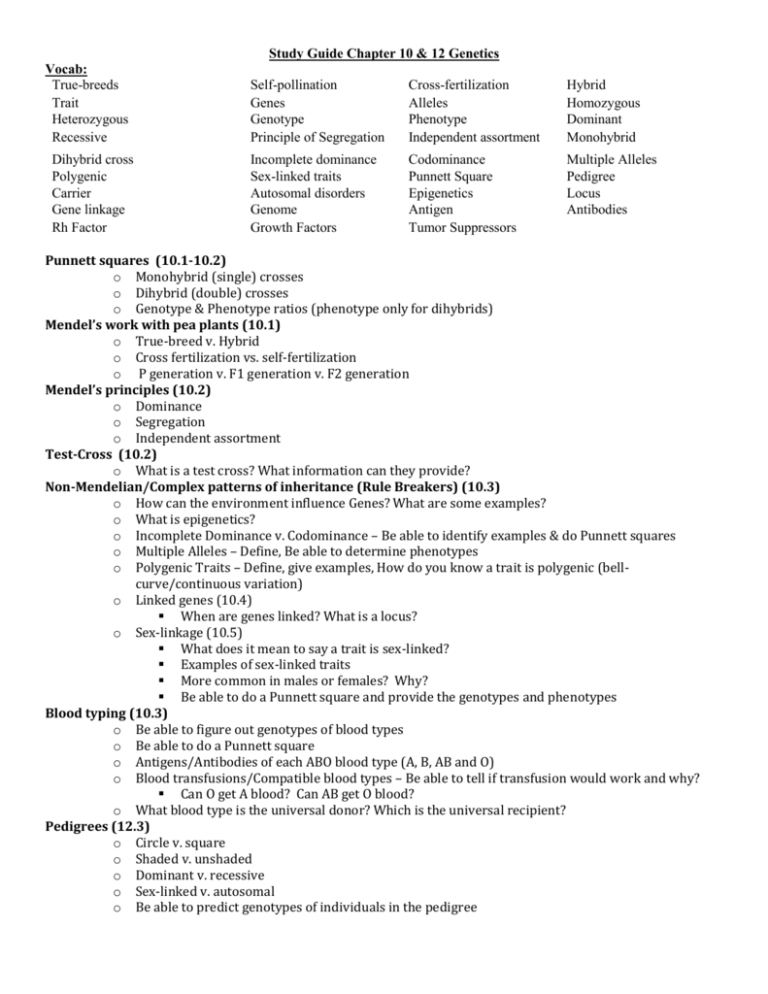
Study Guide Chapter 10 & 12 Genetics Vocab: True-breeds Trait Heterozygous Recessive Dihybrid cross Polygenic Carrier Gene linkage Rh Factor Self-pollination Genes Genotype Principle of Segregation Cross-fertilization Alleles Phenotype Independent assortment Hybrid Homozygous Dominant Monohybrid Incomplete dominance Sex-linked traits Autosomal disorders Genome Growth Factors Codominance Punnett Square Epigenetics Antigen Tumor Suppressors Multiple Alleles Pedigree Locus Antibodies Punnett squares (10.1-10.2) o Monohybrid (single) crosses o Dihybrid (double) crosses o Genotype & Phenotype ratios (phenotype only for dihybrids) Mendel’s work with pea plants (10.1) o True-breed v. Hybrid o Cross fertilization vs. self-fertilization o P generation v. F1 generation v. F2 generation Mendel’s principles (10.2) o Dominance o Segregation o Independent assortment Test-Cross (10.2) o What is a test cross? What information can they provide? Non-Mendelian/Complex patterns of inheritance (Rule Breakers) (10.3) o How can the environment influence Genes? What are some examples? o What is epigenetics? o Incomplete Dominance v. Codominance – Be able to identify examples & do Punnett squares o Multiple Alleles – Define, Be able to determine phenotypes o Polygenic Traits – Define, give examples, How do you know a trait is polygenic (bellcurve/continuous variation) o Linked genes (10.4) When are genes linked? What is a locus? o Sex-linkage (10.5) What does it mean to say a trait is sex-linked? Examples of sex-linked traits More common in males or females? Why? Be able to do a Punnett square and provide the genotypes and phenotypes Blood typing (10.3) o Be able to figure out genotypes of blood types o Be able to do a Punnett square o Antigens/Antibodies of each ABO blood type (A, B, AB and O) o Blood transfusions/Compatible blood types – Be able to tell if transfusion would work and why? Can O get A blood? Can AB get O blood? o What blood type is the universal donor? Which is the universal recipient? Pedigrees (12.3) o Circle v. square o Shaded v. unshaded o Dominant v. recessive o Sex-linked v. autosomal o Be able to predict genotypes of individuals in the pedigree Genes and Cancer (12.4) What are the 3 causes of cancer? How are mutations in Growth factors and/or Tumor Suppressor genes involved in cancer? Lab: Parts of a Flower - Be able to label the parts of the flower - Male parts Stamen: anther and filament - Female parts Carpel: Stigma, style, ovaries and ovules
